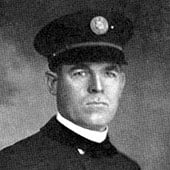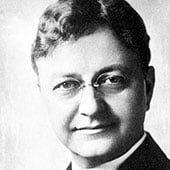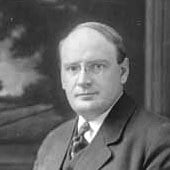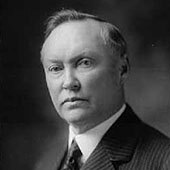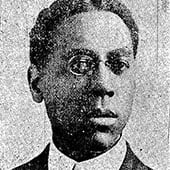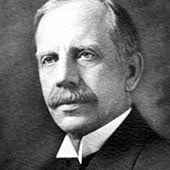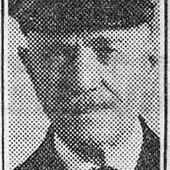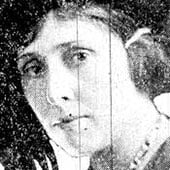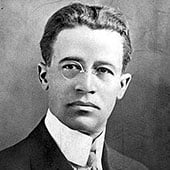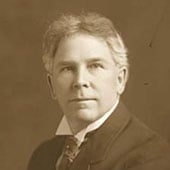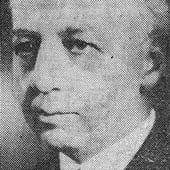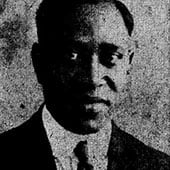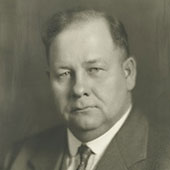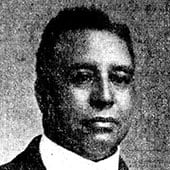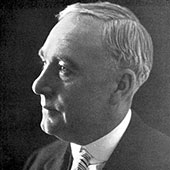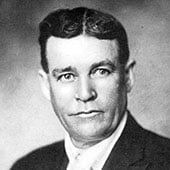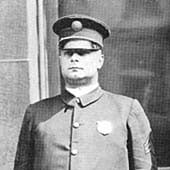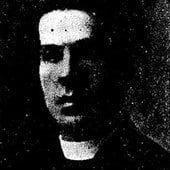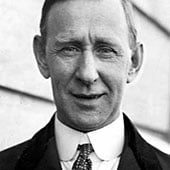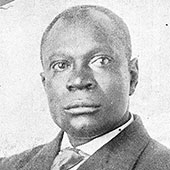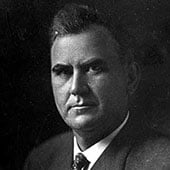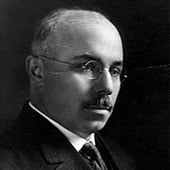
Home
Choose a Menu
-
duluthlynchingsDuluth Lynchings
Home -
timelineTimeline
-
oralOral Histories
-
peoplePeople
-
backgroundBackground
-
lynchingsThe Lynchings
-
legalLegal Proceedings
-
incarcerationsIncarcerations
-
afterwardsAfterwards
-
additional-resourcesAdditional Resources
-
videosVideos
-
documentsDocuments
People
Barber | Barnett | Brewer | Burnquist | Cant | Clayton | Dondino | Ervin | Fesler | Fiskett | Francis, Nellie | Francis, William | Graham | Greene | Hammerberg | Jackson | Judy | Magney | Majors | Mason | McCullough | McGhie | Miller | Murnian | Murphy | Nelson | Olson | Powers | Rhinow | Scrutchin | Stephenson | Sullivan, James | Sullivan, John | Tusken | Vasaly
Barber, Edward H.
Police Lieutenant Edward H. Barber and Police Sergeant Oscar Olson were left in charge at the mob scene. Their superior officers, Chief John Murphy and Captain Anthony Fiskett, were busy following the circus to Virginia, Minnesota to arrest more Black suspects.
After battling the mob outside, Barber retreated inside the jail and pleaded with the mob to stop the assault and let the accused stand trial. He then organized several officers and unsuccessfully tried to retake the jail cells by force.
Barnett, Ferdinand L. Jr.
Ferdinand L. Barnett Jr. was one of the three Black lawyers hired by the NAACP for the Duluth case. Working with R. C. McCullough and Charles Scrutchin, Ferdinand Barnett defended the seven Black men indicted for the alleged rape of Irene Tusken. Barnett was from Chicago and had worked there for fifteen years as an assistant state attorney. He was the most prominent lawyer on the defense team. Much of his work in Duluth focused on the Max Mason case.
Barnett’s family had a history of fighting for civil rights. His father, Ferdinand Barnett was the editor of the Conservator, a Black newspaper in Chicago. His stepmother was Ida B. Wells-Barnett, a famous anti-lynching activist.
Brewer, Dr. George (ca. 1879 – February 3, 1939)
Dr. George Brewer, a pastor at First Presbyterian Church in Duluth, was an active voice against the lynchings. He deplored mob violence and called for the swift and harsh punishment of the lynchers.
Serving at First Presbyterian beginning in 1915, he left in 1920 to be a pastor at Grosse Point Presbyterian in Detroit, Michigan.
Burnquist, Joseph A. A. (July 21, 1879 – January 12, 1961)
Governor Joseph A. A. Burnquist, a Republican, was governor of Minnesota from 1915-1921. While governor, he also served as President of the St. Paul Branch of the NAACP.
After the lynchings, Burnquist granted approval to use the Minnesota National Guard to secure Duluth from further mob violence. He then commissioned Adjutant General W.F. Rhinow to investigate the inefficient response by the Duluth Police.
Despite repeated requests from the NAACP, Burnquist did not commission an independent investigation of the lynchings. The NAACP hired the Employer’s Detective Service, a private firm, to conduct an investigation.
Cant, William A. (December 23, 1863 – January 12, 1933)
Judge William A. Cant, appointed district court judge in 1894, convened the special grand jury responsible for charging those persons involved in the lynchings. He also presided over the William Miller and Carl John Alfred Hammerberg trials.
Judge Cant, along with Judge Bert Fesler, went to the mob scene and tried to reason with the crowd to stop the lynchings.
Clayton, Elias (ca. 1897 – June 15, 1920)
Born in Virginia, Elias Clayton was a laborer for the John Robinson Circus. He was one of three Black men lynched by a mob in Duluth on June 15, 1920. Little is known about his life. His age given on his death certificate was "about 23."
Dondino, Louis (ca. 1882 – )
Louis Dondino was convicted of riot. Thirty-eight years old, Dondino was employed in Duluth as a truck driver. Hours before the lynchings he drove his truck through downtown Duluth, gathering men to join the mob. Witnesses also placed Dondino among the crowd of rioters.
The crime of riot held a maximum sentence of five years. Dondino was paroled from prison in March 1922 and discharged a year later. He served about a year in Minnesota State Prison, Stillwater.
Ervin, J. Louis ( – August 24, 1947)
J. Louis Ervin, a Black attorney from St. Paul, conducted a fact-finding investigation in the days following the lynchings. The report was sent to the National Office of the NAACP. A copy of this report is available on microfilm at the Minnesota Historical Society Library.
Ervin graduated from the College of Law at the University of Minnesota in 1907. He practiced law in Duluth and then moved to St. Paul in 1913. He was a member of the St. Paul Branch of the NAACP.
Fesler, Bert (July 22, 1866 – November 3, 1947)
Judge Bert Fesler, a district court judge in Duluth from 1913 to 1944, presided over the Louis Dondino and Gilbert Henry Stephenson trials.
Judge Fesler, with Judge William A. Cant, went to the mob scene and tried to reason with the crowd to stop the lynchings.
Fiskett, Anthony G. (ca. 1863 – November 21, 1948)
On the morning of June 15, 1920, Police Captain Anthony Fiskett assisted Chief John Murphy in arresting six Black circus workers suspected of raping Irene Tusken. The six suspects included Elias Clayton, Elmer Jackson, and Isaac McGhie, and were taken to the Duluth city jail.
Later that day, Captain Fiskett, Chief Murphy, and another officer followed the circus sixty miles to Virginia, Minnesota, and arrested ten additional Black men, including Max Mason and William Miller. By the time they returned to downtown Duluth, the mob had already lynched one victim.
Francis, Nellie (1874 – ca. 1969)
Nellie Francis, an African American woman from St. Paul, led the passage of Minnesota’s Anti-Lynching Bill, signed into law on April 18, 1921. Francis was the president and founder of the Everywoman Progressive Council and president of Minnesota State Federation of Colored Women. Her husband, attorney William T. Francis, was active in the Max Mason case and assisted in the effort to pass the anti-lynching bill.
Francis, William T. (1869 or 1870 – July 15, 1929)
A prominent Black attorney from St. Paul, William T. Francis was associate counsel for Max Mason, making final arrangements to appeal | Mason’s rape conviction to the State Supreme Court. Francis also helped draft and pass Minnesota’s anti-lynching bill. He assisted his wife Nellie Francis, who led the campaign. The bill was signed into law April 18, 1921. In 1927, Francis was appointed United States Ambassador to Liberia; he died while serving there in 1929.
Graham, Dr. David ( 1859 – November 11, 1933)
On the morning after the alleged rape, Dr. David Graham, a family physician, examined Irene Tusken at her parents’ home in West Duluth. Though rumors would later circulate that she was dead or dying, Dr. Graham’s examination showed she was in good physical condition with no evidence of rape or assault.
Greene, Warren E. ( – June 27, 1937)
St. Louis County Attorney Warren E. Greene was the prosecuting attorney for the Max Mason and William Miller cases. Mason and Miller were among the seven Black circus laborers indicted for the alleged rape of Irene Tusken.
Greene persuaded the jury to find Max Mason guilty of rape. Sentenced to serve seven to thirty years, Mason was released from Minnesota State Prison, Stillwater four years later. William Miller was acquitted.
Greene was also the prosecuting attorney in the Carl John Alfred Hammerberg case. Hammerberg was convicted of rioting and served about a year and a half in Minnesota State Reformatory, St. Cloud.
Hammerberg, Carl John Alfred (February 9, 1902 – January 16, 1924)
Carl John Alfred Hammerberg was convicted of instigating a riot. He was eighteen years old. Born in Sweden, Hammerberg immigrated to Duluth as a child. He left school early and began working at age fifteen, holding jobs in local factories and a shipyard.
The crime of instigating a riot held a maximum sentence of five years. Hammerberg was paroled in June 1922 and discharged in July 1923. He served about a year and a half in Minnesota State Reformatory, St. Cloud.
Jackson, Elmer (April 19, 1897 – June 15, 1920)
Born in Missouri, Elmer Jackson was a resident of Topeka, Kansas. A circus laborer for the John Robinson Circus, he was one of three Black men lynched by a mob in Duluth on June 15, 1920. Little is known about his life. He was twenty-three years old.
Shortly after the lynchings, his father, Clifford Jackson, unsuccessfully sued the city of Duluth for neglecting to protect his son from the mob.
Judy, Dr. Milton W. ( – December 16, 1938)
Magney, Clarence R. (January 11, 1883 – May 13, 1962)
Mayor of Duluth from 1917 to 1920, Clarence Magney was out of town attending a conference on the evening of the lynching. On his return, he condemned the lynchings and supported an investigation of the police department by Adjutant General W. F. Rhinow.
Magney, a graduate of Harvard Law School, was a district court judge in Duluth from 1920 to 1943. From 1943 to 1953 he served as Associate Justice of the Minnesota Supreme Court.
Majors, Reverend William M.
A pastor at St. Marks African Methodist Episcopal Church, Reverend William M. Majors was a leading Black citizen in Duluth. He was active in the campaign to bring the lynchers to justice.
St. Marks African Methodist Episcopal Church was a focal point of Duluth’s Black community and served as a place for worship, socializing, and political discussion. It remains an important institution of the city’s Black community. The church building, erected in 1900, still stands today. It is on the National Register of Historic Places.
Mason, Max ( 1899 – )
Max Mason, a Black circus laborer, was one of two young Black men tried for the alleged rape of Irene Tusken. The other man was William Miller. Although little evidence linked him to the alleged crime, Mason was convicted of rape. He received a sentence of seven to thirty years. A native of Decatur, Alabama, he was twenty-one years old at the time of his conviction.
Max Mason arrived at Minnesota State Prison, Stillwater in August 1921. He appealed his case to the Minnesota Supreme Court, but the guilty verdict was sustained. In 1925 the Minnesota Parole Board discharged Mason from prison with the condition that he leave the state.
McCullough, R. C.
R. C. McCullough was one of three Black lawyers hired by the NAACP for the Duluth case. Working with Charles Scrutchin and Ferdinand L. Barnett Jr., McCullough defended the seven Black circus laborers indicted for the alleged rape of Irene Tusken. He was from Duluth.
McGhie, Isaac (ca. 1900 – June 15, 1920)
Born in Virginia, Isaac McGhie was a laborer for the John Robinson Circus. He was one of three Black men lynched by a mob in Duluth on June 15, 1920. Little is known about his life. His age given on his death certificate was "about 20."
Miller, William
William Miller, a Black circus laborer, was one of two young Black men tried for raping Irene Tusken. The other man was Max Mason. Defense attorney Charles Scrutchin convinced the jury to acquit Miller.
Murnian, William F. (ca. 1865 – July 7, 1927)
As Duluth’s Commissioner of Public Safety, William F. Murnian was in charge of the city’s police, fire, and health departments. A report by Adjutant General W.F. Rhinow criticized Murnian for allowing the mob to grow and become violent, ordering the police not to use their guns to defend the prisoners, and for his general lack of leadership during the incident. The special grand jury investigating the lynchings found Murnian "not competent" and the police department in need of a "thorough overhauling." Despite these criticisms, Murnian was re-elected to his position in April 1921.
Murphy, John (October 27, 1869 – )
In the early morning of June 15, 1920, Police Chief John Murphy received a call from James Sullivan’s father, informing him of the rape allegations. Assisted by Captain Anthony Fiskett and other officers, Murphy arrested six Black circus workers, including Elias Clayton, Elmer Jackson, and Isaac McGhie. The six suspects were taken to the Duluth city jail.
Unsure all suspects were apprehended, Murphy quickly set out to make more arrests. The circus train had left Duluth, so Murphy, Fiskett, and another officer drove sixty miles to Virginia, Minnesota, the next stop on the circus tour. Once there, they arrested ten more Black men, including Max Mason and William Miller. By the time they returned to downtown Duluth, the mob had already lynched one victim.
Olson, Oscar G. (August 9, 1887 – December 1, 1941)
Police Sergeant Oscar Olson and Police Lieutenant Edward H. Barber were left in charge at the mob scene. Their superior officers, Police Chief John Murphy and Captain Anthony G. Fiskett, were busy following the circus to Virginia, Minnesota to arrest more Black suspects.
With only about a dozen officers, the police were far outnumbered. Sergeant Olson called for more policemen and then ordered the dozen officers to position themselves at the front and rear of the jail. Barraged by bricks and stones from the mob, the police did not fire their guns, though some used clubs. Sergeant Olson grabbed a fire hose and blasted the mob with water, trying to push them back. Olson later testified that he was the last officer to give up.
Powers, Reverend William J. (ca. 1884 – May 16, 1949)
Reverend William J. Powers of Sacred Heart Cathedral, a Catholic church in Duluth, was at the scene of the lynchings. He desperately begged the lynchers to stop, but his pleas were ignored.
Born in Marquette, Michigan, the Reverend studied in St. Paul, Minnesota. He was thirty-six years old at the time of lynchings.
Rhinow, W. F. (May 5, 1878 – November 19, 1956)
Adjutant General W.F. Rhinow arrived in Duluth the morning after the lynchings, commanding a force of one hundred and thirty Minnesota National Guard troops from Fort Snelling. The National Guard secured the city, preventing further mob violence.
Under Governor Joseph A.A. Burnquist’s orders, Rhinow led an investigation of the Duluth Police Department. Rhinow reported the police offered "inconsequential resistance" to the mob and that Commissioner of Public Safety William F. Murnian displayed a "woeful lack of courage, decision, and competency."
Scrutchin, Charles W. (September 1865 – July 14, 1930)
Charles Scrutchin was one of three Black lawyers hired by the NAACP for the Duluth case. Working with R. C. McCullough and Ferdinand L. Barnett Jr., he defended the seven Black men indicted for the alleged rape of Irene Tusken. Scrutchin led the defense team for the William Miller trial and convinced the jury to acquit Miller of rape.
A native of Richmond, Virginia, Scrutchin graduated from law school at the University of Michigan in 1893. After a stint as an attorney in Chicago, Scrutchin moved to Bemidji, a town in northern Minnesota, and set up a practice.
Stephenson, Gilbert Henry (January 13, 1886 – January 5, 1977)
Gilbert Henry Stephenson was convicted of riot. Thirty-four years old, Stephenson worked in Duluth as a carpentry assistant, foreman, and truck driver. Witnesses placed Stephenson at the crime scene, testifying he helped the mob break into the jail and take the lynching victims from their cells.
The crime of riot held a maximum sentence of five years. Stephenson was paroled from prison in March 1922 and discharged a year later. He served about a year in Minnesota State Prison, Stillwater.
Sullivan, James T. (September 12, 1902 – October 16, 1969)
On June 14, 1920, James Sullivan accompanied Irene Tusken at the John Robinson Circus. Tusken and Sullivan alleged six Black circus laborers held them at gunpoint and then raped Tusken. Sullivan was the first to come forward about the alleged rape, informing his father later that evening.
James Sullivan was eighteen years old and a senior at Denfeld High in West Duluth. He worked as a boat spotter on the ore docks where his father was night superintendent.
Sullivan, John Joseph ( 1875 – August 20, 1937)
Warden of the Stillwater State Prison from 1921-1937, John J. Sullivan oversaw the imprisonment of Louis Dondino, Gilbert Henry Stephenson, and Max Mason.
Tusken, Irene (November 1, 1901 – June 12, 1996)
Irene Tusken, a white nineteen-year-old from West Duluth, claimed six Black circus laborers raped her on the evening of June 14, 1920. Her story spread among vengeful Duluthians, leading to the mob lynching of three young Black men — Elias Clayton, Elmer Jackson, and Isaac McGhie.
Little evidence backed her allegations. Dr. David Graham, a family physician, examined Tusken shortly after the alleged rape, finding no physical evidence of rape or assault. The police were not contacted until hours after the claimed rape occurred. Her friend James Sullivan was the only witness. Additionally, Tusken could only give vague physical descriptions of her alleged assailants.
Irene Tusken was employed in Duluth as a stenographer. She was the oldest of four children. Her father, William, was a mail carrier.
Vasaly, Charles E. ( 1869 – April 23, 1935)
Superintendent of the Minnesota State Reformatory, St. Cloud from 1921-1934, Charles E. Vasaly oversaw the imprisonment of Carl John Alfred Hammerberg.
